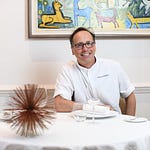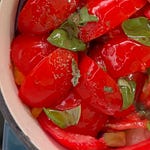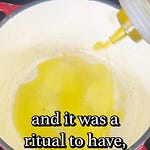How Haute Cuisine Became a Symbol of Human Dominance
Let’s set the scene: Versailles, 1682. Louis XIV is hosting dinner, and the menu is less about sustenance and more about spectacle—peacocks sewn meticulously back into their iridescent feathers, live frogs spritzing champagne into the powdered wigs of nobles, and a towering confection sculpted to resemble the lost city of Atlantis. The message was unmistakable:
We don’t just eat nature—we conquer it.
Thus entered haute cuisine, France’s glittering, starched weapon of cultural domestication. Here, even a humble carrot wasn’t safe from a power trip. Every leaf, every grain, every wild beast was plucked from its natural chaos and marched, trimmed, stuffed, buttered, and burned into submission.
Here lies the grand irony: the French chef—imagine the poet, the artist, the rebel in a towering toque—became the ultimate domesticator. They didn’t simply cook; they tamed. A wild duck? boring. A canard à l’orange? Now you have an aristocrat on a plate, wearing a monocle and quoting Voltaire. Vegetables weren’t nurtured; they were julienned into uniform matchsticks, blanched into pastel submission. Even butter wasn’t spared—whipped, mounted, folded into ephemeral silken forms, then piped into rosettes like edible Baroque architecture.
Haute cuisine wasn’t nourishment. It was a coronation: humanity crowned king over the edible world.
But—like any good soufflé—history is full of air pockets.
The uncomfortable truth? For most of its early life, French food was peasant food: rough stews that simmered over wood fires for days; bread as dense and rugged as a ploughman’s fists; wines tasting of the same dirt the grapes fought to survive in. It wasn’t until the 19th century that the transformation truly arrived.
Enter Carême (soon on Apple TV) —think Napoleon, but armed with sugar and an architectural fetish. Carême didn’t just cook; he declared that food must transcend sustenance. It must be art, theatre, conquest. Cue the towering pièces montées, sauces reduced to the consistency of liquid velvet, and portion sizes so delicate a sparrow would leave the table famished.
The new gospel was clear : Civilised people don’t just eat—they perform eating.
This shift wasn’t harmless. It wasn’t innocent. Haute cuisine became a subtle form of culinary colonialism, a luxurious, butter-laden virus that spread across Europe and into the colonies. From Moscow to New Orleans, sophistication became synonymous with drowning local ingredients in béchamel and looking suspiciously at anyone who dared eat without a polished fork.
French culinary standards didn’t just influence—they erased.
Algerian spices? Too savage. Vietnamese herbs? Too unruly. The mission demanded a monoculture of taste—rich, creamy, orderly—and a barely concealed sneer at anything that refused to be tamed.
And what of the chefs—the supposed revolutionaries of the palate? They became the high priests of this edible empire, officiating in kitchens that looked more like militarised factories than spaces of creativity. The brigade system regimented cooks like foot soldiers, the kitchen hierarchy stricter than the court at Versailles.
Creativity was tolerated—provided it marched to the drumbeat of Escoffier.
To question was heresy; to innovate was near treason.
Haute cuisine forged a gilded cage where chefs, trapped by their own rituals, became both jailers and inmates.
The conquest of the natural world had found its most exquisite, butter-slicked expression—one plate at a time.
Please note that this is an extract from a chapter in my upcoming book.













Share this post